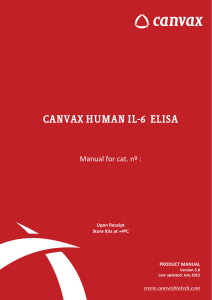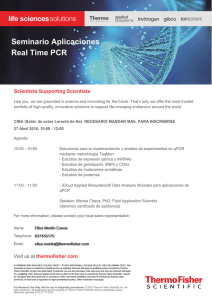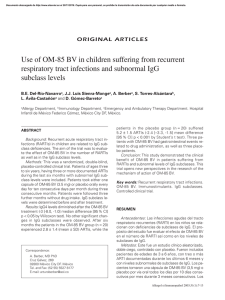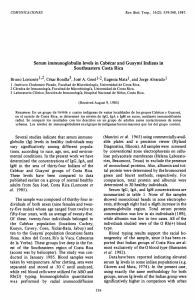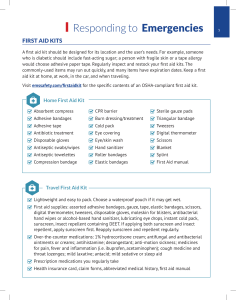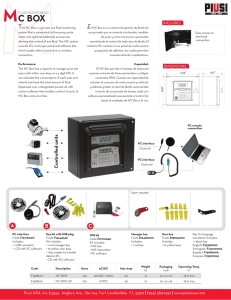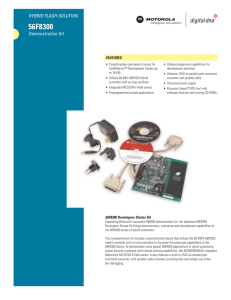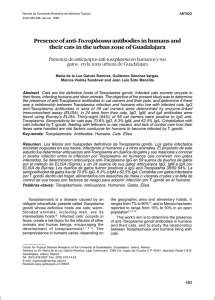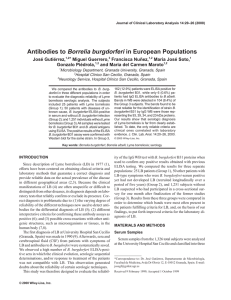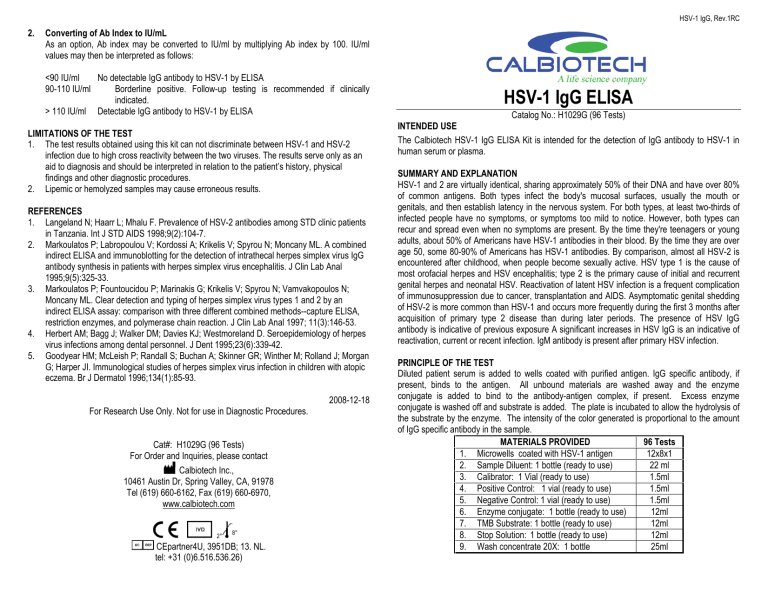
HSV-1 IgG, Rev.1RC 2. Converting of Ab Index to IU/mL As an option, Ab index may be converted to IU/ml by multiplying Ab index by 100. IU/ml values may then be interpreted as follows: <90 IU/ml No detectable IgG antibody to HSV-1 by ELISA 90-110 IU/ml Borderline positive. Follow-up testing is recommended if clinically indicated. > 110 IU/ml Detectable IgG antibody to HSV-1 by ELISA LIMITATIONS OF THE TEST 1. The test results obtained using this kit can not discriminate between HSV-1 and HSV-2 infection due to high cross reactivity between the two viruses. The results serve only as an aid to diagnosis and should be interpreted in relation to the patient’s history, physical findings and other diagnostic procedures. 2. Lipemic or hemolyzed samples may cause erroneous results. REFERENCES 1. Langeland N; Haarr L; Mhalu F. Prevalence of HSV-2 antibodies among STD clinic patients in Tanzania. Int J STD AIDS 1998;9(2):104-7. 2. Markoulatos P; Labropoulou V; Kordossi A; Krikelis V; Spyrou N; Moncany ML. A combined indirect ELISA and immunoblotting for the detection of intrathecal herpes simplex virus IgG antibody synthesis in patients with herpes simplex virus encephalitis. J Clin Lab Anal 1995;9(5):325-33. 3. Markoulatos P; Fountoucidou P; Marinakis G; Krikelis V; Spyrou N; Vamvakopoulos N; Moncany ML. Clear detection and typing of herpes simplex virus types 1 and 2 by an indirect ELISA assay: comparison with three different combined methods--capture ELISA, restriction enzymes, and polymerase chain reaction. J Clin Lab Anal 1997; 11(3):146-53. 4. Herbert AM; Bagg J; Walker DM; Davies KJ; Westmoreland D. Seroepidemiology of herpes virus infections among dental personnel. J Dent 1995;23(6):339-42. 5. Goodyear HM; McLeish P; Randall S; Buchan A; Skinner GR; Winther M; Rolland J; Morgan G; Harper JI. Immunological studies of herpes simplex virus infection in children with atopic eczema. Br J Dermatol 1996;134(1):85-93. 2008-12-18 For Research Use Only. Not for use in Diagnostic Procedures. Cat#: H1029G (96 Tests) For Order and Inquiries, please contact Calbiotech Inc., 10461 Austin Dr, Spring Valley, CA, 91978 Tel (619) 660-6162, Fax (619) 660-6970, www.calbiotech.com 2° 8° CEpartner4U, 3951DB; 13. NL. tel: +31 (0)6.516.536.26) HSV-1 IgG ELISA Catalog No.: H1029G (96 Tests) INTENDED USE The Calbiotech HSV-1 IgG ELISA Kit is intended for the detection of IgG antibody to HSV-1 in human serum or plasma. SUMMARY AND EXPLANATION HSV-1 and 2 are virtually identical, sharing approximately 50% of their DNA and have over 80% of common antigens. Both types infect the body's mucosal surfaces, usually the mouth or genitals, and then establish latency in the nervous system. For both types, at least two-thirds of infected people have no symptoms, or symptoms too mild to notice. However, both types can recur and spread even when no symptoms are present. By the time they're teenagers or young adults, about 50% of Americans have HSV-1 antibodies in their blood. By the time they are over age 50, some 80-90% of Americans has HSV-1 antibodies. By comparison, almost all HSV-2 is encountered after childhood, when people become sexually active. HSV type 1 is the cause of most orofacial herpes and HSV encephalitis; type 2 is the primary cause of initial and recurrent genital herpes and neonatal HSV. Reactivation of latent HSV infection is a frequent complication of immunosuppression due to cancer, transplantation and AIDS. Asymptomatic genital shedding of HSV-2 is more common than HSV-1 and occurs more frequently during the first 3 months after acquisition of primary type 2 disease than during later periods. The presence of HSV IgG antibody is indicative of previous exposure A significant increases in HSV IgG is an indicative of reactivation, current or recent infection. IgM antibody is present after primary HSV infection. PRINCIPLE OF THE TEST Diluted patient serum is added to wells coated with purified antigen. IgG specific antibody, if present, binds to the antigen. All unbound materials are washed away and the enzyme conjugate is added to bind to the antibody-antigen complex, if present. Excess enzyme conjugate is washed off and substrate is added. The plate is incubated to allow the hydrolysis of the substrate by the enzyme. The intensity of the color generated is proportional to the amount of IgG specific antibody in the sample. MATERIALS PROVIDED 96 Tests 1. Microwells coated with HSV-1 antigen 12x8x1 2. Sample Diluent: 1 bottle (ready to use) 22 ml 3. Calibrator: 1 Vial (ready to use) 1.5ml 4. Positive Control: 1 vial (ready to use) 1.5ml 5. Negative Control: 1 vial (ready to use) 1.5ml 6. Enzyme conjugate: 1 bottle (ready to use) 12ml 7. TMB Substrate: 1 bottle (ready to use) 12ml 8. Stop Solution: 1 bottle (ready to use) 12ml 9. Wash concentrate 20X: 1 bottle 25ml HSV-1 IgG, Rev.1RC MATERIALS NOT PROVIDED 1. Distilled or deionized water 2. Precision pipettes 3. Disposable pipette tips 4. ELISA reader capable of reading absorbance at 450nm 5. Absorbance paper or paper towel 6. Graph paper STORAGE AND STABILITY 1. Store the kit at 2-8° C. 2. Keep microwells sealed in a dry bag with desiccants. 3. The reagents are stable until expiration of the kit. 4. Do not expose test reagents to heat, sun or strong light. WARNINGS AND PRECAUTIONS 1. Potential biohazardous materials: The calibrator and controls contain human source components, which have been tested and found non-reactive for hepatitis B surface antigen as well as HIV antibody with FDA licensed reagents. However, as there is no test method that can offer complete assurance that HIV, Hepatitis B virus or other infectious agents are absent, these reagents should be handled at the Biosafety Level 2, as recommended in the Centers for Disease Control/National Institutes of Health manual, "Biosafety in Microbiological and Biomedical Laboratories." 1984. 2. This kit is designed for research use only. 3. Optimal results will be obtained by strict adherence to the test protocol. Precise pipetting as well as following the exact time and temperature requirements is essential. 4. Do not pipette by mouth. Do not smoke, eat, or drink in the areas in which specimens or kit reagents are handled. 5. The components in this kit are intended for use as an integral unit. The components of different lots should not be mixed. 6. Control sera and sample diluent contain preserved with sodium azide. Sodium azide may react with lead and copper plumbing to form explosive metal azide. On disposal, flush with a large volume of water. SPECIMEN COLLECTION AND HANDLING 1. Collect blood specimens and separate the serum. 2. Specimens may be refrigerated at 2–8° C for up to seven days or frozen for up to six months. Avoid repetitive freezing and thawing. 2. 3. 4. 5. 6. 7. 8. 9. Negative control, positive control, and calibrator are ready to use. Prepare 1:21 dilution of test samples, by adding 10 µl of the sample to 200 µl of sample diluent. Mix well. Dispense 100 µl of diluted sera, calibrator and controls into the appropriate wells. For the reagent blank, dispense 100µl sample diluent in 1A well position. Tap the holder to remove air bubbles from the liquid and mix well. Incubate for 20 minutes at room temperature. Remove liquid from all wells. Wash wells three times with 300 µl of 1X wash buffer. Blot on absorbance paper or paper towel. Dispense 100 µl of enzyme conjugate to each well and incubate for 20 minutes at room temperature. Remove enzyme conjugate from all wells. Wash wells three times with 300 µl of 1X wash buffer. Blot on absorbance paper or paper towel. Dispense 100 µl of TMB substrate and incubate for 10 minutes at room temperature. Add 100 µL of stop solution. Read O.D. at 450 nm using ELISA reader within 15 min. A dual wavelength is recommended with reference filter to 600-650 nm. CALCULATION OF RESULTS 1. Check Calibrator Factor (CF) value on the calibrator bottle. This value might vary from lot to lot. Make sure you check the value on every kit. 2. Calculate the cut-off value: Calibrator OD x Calibrator Factor (CF). 3. Calculate the Ab (Antibody) Index of each determination by dividing the O.D. value of each sample by cut-off value. Example of typical results: Calibrator mean OD = 0.8 Calibrator Factor (CF) = 0.5 Cut-off Value = 0.8 x 0.5= 0.400 Positive control O.D. = 1.2 Ab Index = 1.2 / 0.4 = 3 Patient sample O.D. = 1.6 Ab Index = 1.6 / 0.4 = 4.0 QUALITY CONTROL The test run may be considered valid provided the following criteria are met: 1. 2. 3. The O.D. of the Calibrator should be greater than 0.250. The Ab index for Negative control should be less than 0.9. The Ab Index for Positive control should be greater than 1.2. REAGENT PREPARATION Prepare 1X Wash buffer by adding the contents of the bottle (25 ml, 20X) to 475 ml of distilled or deionized water. Store at room temperature (18-26 °C). INTERPRETATION The following is intended as a guide to interpretation of HSV-1 IgG test results; each laboratory is encouraged to establish its own criteria for test interpretation based on sample populations encountered. ASSAY PROCEDURE Bring all specimens and kit reagents to room temperature (18-26 °C) and gently mix. 1. Place the desired number of coated strips into the holder. 1. Antibody Index Interpretation <0.9 No detectable antibody to HSV-1 IgG by ELISA. 0.9-1.1 Borderline positive. Follow-up testing is recommend if clinically indicated. >1.1 Detectable antibody to HSV-1 IgG by ELISA.

